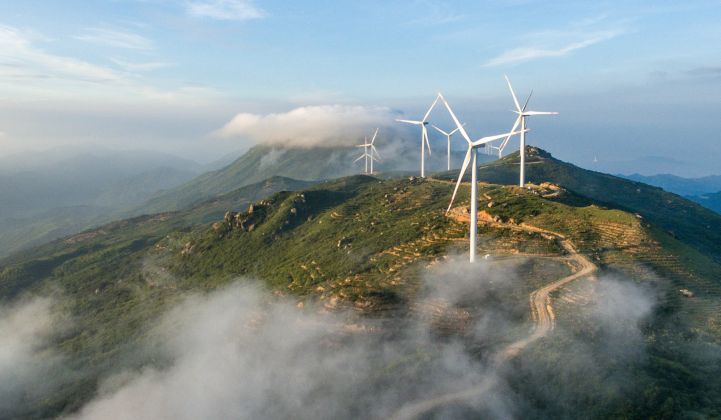News came recently that three Western wind turbine manufacturers — GE, Siemens Gamesa and Vestas — failed to take a single bite of the 6-gigawatt auction for wind power in Ulanqab, Inner Mongolia. The project is the world’s largest in wind capacity and is being developed by State Power Investment Corporation, one of China’s top state-owned power producers. Chinese companies SEWPG (SEwind), Goldwind, CSIC Haizhuang, Mingyang and DEC all won wind turbine orders from the auction.
Commenting on the bidding results, Xiaoyang Li, senior analyst at Wood Mackenzie Power & Renewables, was not surprised. “The preference for local Chinese manufacturers and premiums of up to 40 percent in bidding pricing prevented [Western OEMs] from winning,” Li said.
The bidding set the entry level high by including some key requirements such as global ranking (OEMs must be in the top 15) and a track record of at least 800 megawatts in 2018 alone. Among 14 bidders, 11 were qualified, including the three Western OEMs.
“This nation-level project is the first subsidy-free national wind base in China, and the power price is equal to Inner Mongolia’s coal power price (~283 RMB per megawatt-hour). That said, the developer prefers Chinese [state-owned enterprises] as they have better ability to take long-term project risks compared to private and Western companies,” Li added. Envision, China’s second-largest turbine OEM, also did not make it to the winner list.
The absence of Western OEMs in the world’s largest wind farm brings up many questions on how they could grow their presence in China’s wind power market, or whether they are in terminal decline in the country. Western turbine OEMs in the Chinese market are faced with growing challenges, according to new research from Wood Mackenzie Power & Renewables.
Vestas, GE and Siemens Gamesa are now the only three non-Chinese manufacturers vying for market share there, while several others have exited for various reasons. The combined market share in China for these three majors fell to just 5 percent in 2018. Vestas gained 2.9 percent market share, the highest of the foreign OEMs. China is the world’s single largest market with 20.1 gigawatts of newly installed capacity last year.
Under the backdrop of transitioning to an auction mechanism and wind grid parity targets by 2020, “Chinese owners are paying more attention to lower capex and near-term project internal rates of return. That said, the average pricing gap of 5 percent to 40 percent really makes a difference,” Li said.
Technology advantages such as a higher utilization rate and better long-term performance do not bring much advantage for Western OEMs in the Chinese market because dispatch hours are set by grid companies rather than in a competitive wholesale market. In addition, wind curtailment is a major problem which remains to be resolved.
“We’ve seen improvement in the quality and reliability of Chinese wind turbines in recent years, and Chinese suppliers have shown a faster response and more flexibility to develop specialized equipment to meet customer needs,” Li commented when asked about turbine technology competition. The decreasing technology gap weakens the market competitiveness of Western OEMs.
The Chinese wind market is expected to install 237 gigawatts of new capacity by 2028, making it the largest market globally with many opportunities ahead. The whole value chain, from project development to turbine supply, and from engineering, procurement and construction to operations and maintenance, will mature in the long term. Given the existing policy conditions and competitive landscape, Western players will be increasingly challenged to gain market share against local competitors.
***
Learn more about Wood Mackenzie Power & Renewables' wind power research here.




